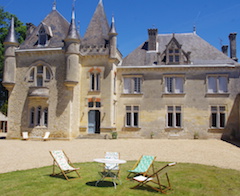
Une situation exceptionnelle, aux portes de Saint-Émilion, pour ce magnifique vignoble de 18 hectares qui encadre la demeure historique familiale.Au fil des générations, la famille Reiffers, a su valoriser ce très beau terroir, majoritairement argilo-calcaire. Le terroir du Château Côte de Baleau est composé de 80% de Merlot, 15% de Cabernet Franc et 5% de Cabernet Sauvignon, répartis sur 15 hectares de vignes.
Les vins, dont la charpente racée n'a d'égal que l'expression du fruit et la finesse des tannins, font de Côte de Baleau aujourd'hui, un grand classique de Saint-Émilion, très représentatif de son appellation.
Grand Cru Classé depuis 2012, le Château Côte de Baleau met tout en œuvre pour pousser le vin à son meilleur niveau, avec une récente rénovation du chai et une modernisation du cuvier.
En avril 2013, Sophie Fourcade a vendu Côte de Baleau à la famille Cuvelier (également propriétaire des Châteaux Léoville Poyferré, Poujeaux, Grandes Murailles & Clos Fourtet).
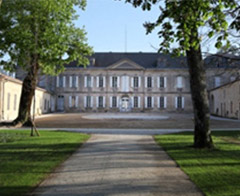
Ce magnifique château bénéficie d'une vue à imprenable sur le village de Saint-Emilion. Vous pouvez vous y rendre à pied. Le château jusqu'alors propriété familiale a été vendu à une compagnie d'assurance en 2006 qui a entrepris un gigantesque chantier de rénovation. Il s'est achevé en 2010, vous apprécierez la réussite de ce projet mêlant modernité et élégance.
Au XVIIIe siècle, Jean Combret de Faurie édifie le bâtiment principal du château avec un parc d'agrément et des dépendances. Cet ingénieur ingénieux, entreprend aussi d'importants travaux pour cultiver la vigne, tels les sillons qu'il fait creuser dans l'assise calcaire qui affleure sur une grande partie du domaine. Au XIXe, Jean Laveau, un viticulteur surdoué qui fut durant un quart de siècle l'un des plus importants viticulteurs de Saint Emilion, rachète la propriété et y fait merveille.
A sa mort, ses terres sont réparties dans sa proche parenté dont Jeanne du Foussat de Bogeron qui apporte Soutard en dot lorsqu'elle épouse Michel des Ligneris en 1919.
La descendance de cet ingénieur agronome gouvernera les destinées de la propriété jusqu'en 2006. La Mondiale, rachète alors la propriété avec l'ambition de voir s'épanouir ce magnifique fleuron dans le plus grand respect de son histoire, de son terroir…C'est désormais Claire Thomas-Chenard, œnologue, fille d'une longue lignée d'ingénieurs chimistes et d'œnologues qui exerce ses talents sur cette propriété de 27 hectares, dont les contours du vignoble restent inchangés depuis plus d'un siècle.
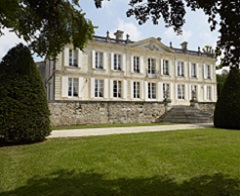
Le Château de La Dauphine, doit son nom à la Dauphine de France, Marie-Josèphe de Saxe, mère de Louis XVI, qui séjourna à la propriété au 18ème siècle. Aujourd’hui, propriété de la famille Labrune, le Château de La Dauphine est lové dans un arc de la Dordogne au cœur d’un vignoble BIO & BIODYAMIE de 53Ha à Fronsac. Un travail soigné du vignoble mis en valeur par des bâtiments techniques ultra-modernes afin de produire deux grands vins rouges exprimant la finesse de leur terroir. Les qualités oenotouristiques de la propriété ont été récompensées par 3 BEST OF d’OR (concours Best of Wine Tourism) : Architecture & Paysage, Restauration et Valorisation Oenotouristiques des Pratiques Environnementales
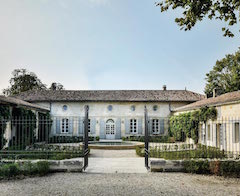
Château Beauregard, l’un des premiers domaines de la région à étendre son vignoble au XVIIIème siècle, jouit d’un terroir d’exception.
C’est aux portes de Saint Emilion, dans la prestigieuse appellation de Pomerol, que se trouve le château Beauregard. Ce vignoble de 17,5 hectares en agriculture biologique se situe sur le plateau de Catusseau, un terroir qui a fait naitre des vins de renommée mondiale tels que Cheval Blanc ou encore Pétrus.
En 2014, les familles Moulin et Cathiard rachètent Château Beauregard et opèrent une transformation en profondeur. Depuis 2016, le château Beauregard a ouvert ses portes aux amateurs de vin afin d’y faire découvrir ses secrets de fabrication.
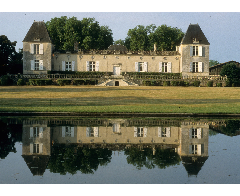
Le château de Sales est dans la même famille depuis 1464 soit 549 ans de continuité familiale. Il s’est transmis par mariage au cours des siècles de Bertrand de Sauvanelle, aux Desyagues, de Laage de Meux et actuellement de Lambert. Construit au XVII siècle, le château allie charme et élégance. Il est la plus grande propriété de l'AOC (appellation d'origine controlée) de Pomerol. Ses vins sont connus pour réprésenter divinement le terroir dont ils sont issus.(90 hectares)
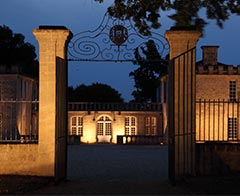
Le Château de Ferrand, Grand Cru Classé de Saint-Emilion, est un ravissant château XVII°, entouré de vignes et dominant la vallée de la Dordogne.
Un site rare, aujourd’hui dévoilé et accessible.
La salle de réception, les chais ont été rénovés dans un style sobre et élégant permettant des visites, réceptions ou séminaires personnalisés. Notre sommelier vous fera découvrir l’univers fascinant des vieux millésimes et le plaisir de la dégustation.
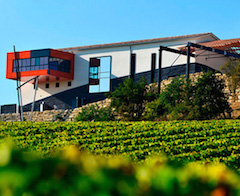
Le Château La Croizille a été acquis par la famille De Schepper – De Mour en 1996. Le Château La Croizille est un Saint-Emilion Grand Cru de 5 hectares de vignes qui bénéficie d’un terroir remarquable et d’une excellente exposition sur les versants sud du plateau argilo-calcaire de Saint-Emilion dans la commune de Saint-Laurent des Combes.
Il allie ce grand terroir à une technologie de pointe et un savoir-faire traditionnel pour faire du Château un vin à personnalité incomparable à Saint-Emilion. La construction du nouveau chai moderne terminé en octobre 2012, constitue un magnifique outil technique mais aussi œnotouristique.
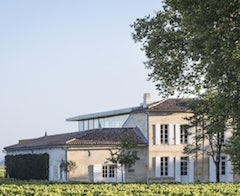
Propriété viticole depuis le XVIe siècle, le Château La Dominique est un Grand cru classé de Saint-Emilion idéalement situé au nord-ouest de l’appellation.
Acquis en 1969 par Clément Fayat, le vignoble fut entièrement reconstruit et fait, depuis, l’objet de constantes améliorations.
Au voisinage direct des Châteaux Cheval Blanc, Figeac, L’Évangile et
La Conseillante, le terroir exceptionnel de ce domaine de 29 ha est composé de sables anciens et d’argiles où les Merlot, Cabernet franc et Cabernet Sauvignon s’épanouissent pleinement.
Afin d’affiner la précision et la qualité d’un cru reconnu, un ensemble architectural et technique tout à fait novateur a été inauguré en 2014. Ce nouvel espace abrite les espaces de vinification et de réception avec une terrasse panoramique et un point de vue exceptionnel sur le vignoble de Pomerol et de Saint-Emilion.
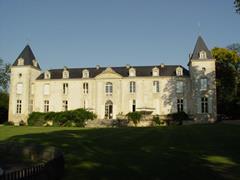
Le magnifique Château de Reignac entouré de ses 80 hectares de vignes fut construit au XVI° siècle par le Seigneur Baude de Peyron. Se situant dans l'Entre-deux-mers, son sol bénéficie des meilleures particularités des rives droite et gauche. Au fil des siècles, il a subi de nombreuses améliorations telles que la cour d'honneur et la serre édifiée par Gustave Eifel au XVIII° et XIX° siècle puis le pigeonnier rénové en 1998 servant aujourd'hui de lieu de dégustation.
En 1990, la propriété est rachetée par Yves et Stéphanie Vatelot qui font appel à l'œnologue reconnu, Michel Rolland. Lors de son acquisition, il n'existait alors qu'un seul vin, Le Château de Reignac. Depuis, les nouveaux propriétaires en ont créés trois nouveaux : Grand Vin de Reignac (qui se trouve être leur premier vin), Reignac Blanc (association des meilleurs cépages de la région) et Bathus (une cuvée spéciale composée uniquement de Merlot).
En 1996 et 2000, le vin de la propriété est notée 90 et 92/100 par le célèbre critique Robert Parker.
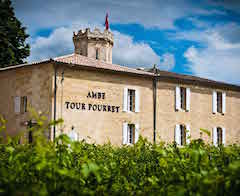
Le Château Ambe Tour Pourret, Saint-Emilion Grand Cru, se situe sur la route d’origine qui reliait Saint-Émilion à Coutras, empruntée par Louis XI à la fin de la guerre de Cent Ans. Les premières traces de l’existence du Château remontent à 1811.
La propriété Ambe Tour Pourret est constituée aujourd’hui par 5 hectares de vignes : le Château, un chai à barriques et un cuvier. Le vignoble possède un encépagement de Merlot et Cabernet Franc sur un sol sableux et un sous-sol argileux. Le Chateau Ambe Tour Pourret a choisi de pratiquer l’agriculture biologique pour un plus grand respect du terroir et de l’environnement. Le vignoble du Château Ambe Tour Pourret est certifié biologique depuis 2015.
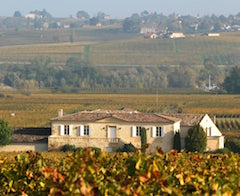
Le Château Larmande est l’une des plus anciennes propriétés de Saint-Émilion. Les archives de la ville notent déjà son existence en 1585.
Aujourd’hui, la propriété s’étend sur 20 hectares, en faisant ainsi l’un des plus importants Grands Crus Classés de Saint-Émilion.
Alliant méthodes de culture ancestrales et technologies de pointe, Larmande a su trouver la juste alchimie pour porter chaque millésime à son plus haut niveau. La propriété se trouve à 1 200 mètres du village de Saint-Émilion !
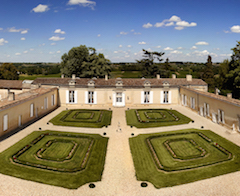
Les origines du vignoble du château Fombrauge, Grand Cru Classé de Saint-Emilion, remontent au XVIème siècle, ce qui en fait l'un des crus les plus anciens du Saint-Emilionnais. Sa belle chartreuse était à l'origine un cloître de Chartreux.
Avec un vignoble qui s’étend sur 58,60 hectares, un des plus vastes de Saint-Emilion, c’est justement cette superficie hors du commun qui confère à son terroir une typicité unique… Une typicité dans la diversité. Diversité des sols mais aussi multiplicité des expositions qui confèrent au vin de Fombrauge sa complexité et son identité.
L’histoire de Fombrauge est liée à 3 familles, les Canolle, les Dumas, et les Taffard.
Aujourd'hui, pour exprimer toute la richesse de ce terroir, Bernard Magrez, propriétaire depuis 1999, allie à Fombrauge, savoir-faire ancestral et viticulture de précision.
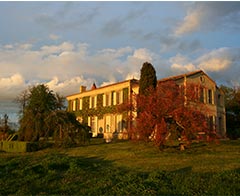
Ce 1erGrand Cru récemment classé en 2006 apporte un soin tout particulier à l'élaboration de ses vins. Pour nous, l'un des plus grands vins de Saint-Emilion.
Le Domaine de Mondot appartenait à l'abbé de Sèze qui édifia en 1745 le château actuel. Sous sa direction, le vin de Mondot prit place parmi les mieux cotés de Saint-Émilion.
Il faut attendre 1850 pour voir apparaître Raymond Troplong qui va s'éprendre de Mondot, et constituer l'actuel domaine. Pair de France, juriste célèbre, amateur d'art et de littérature, ami intime de Théophile Gautier, il fut président du Sénat de 1852 à sa mort en 1869. Il sut exploiter la richesse de Mondot et en tirer un vin de toute première valeur que le fameux « Féret » classe en 1868 à la seconde place de Saint-Émilion. Avant de vendre le domaine, Édouard Troplong, son neveu et successeur, lui adjoindra le nom de Troplong.
Au début du XXe siècle, Alexandre Valette, négociant en vins à Paris, achète le domaine. Il possède déjà La France à Fronsac et à Quinsac, puis peu après, acquiert le Château Pavie. Son fils Bernard, puis son petit-fils Claude, lui succèderont à la tête de la propriété. Aujourd'hui, Christine Valette-Pariente et son mari Xavier Pariente ont pris en charge le domaine dont ils sont propriétaires.
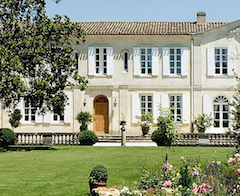
Le Château Canon-La-Gaffelière, propriété des comtes von Neipperg depuis 1971, est situé en pied de côte au sud du village médiéval de Saint-Émilion.
La propriété de 19,5 ha est certifiée Agriculture Biologique depuis le millésime 2014 et livre des vins racés et précis, d’une grande constance qualitative. L’encépagement est caractérisé par un équilibre parfait entre Merlot et Cabernet.
Dépositaire de quelque huit siècles de tradition viticole familiale, le comte Stephan von Neipperg a réussi le pari audacieux de hisser Château Canon-La-Gaffelière au rang de Premier Grand Cru Classé de Saint-Émilion, grâce à ses efforts, sa passion et à une approche moderne de la viticulture.
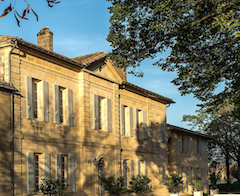
Propriété de la famille Cuvelier depuis 2001, Clos Fourtet a su confirmer sa place au sein des Premiers Grands Crus Classés et traduit la volonté et l’investissement d’une famille passionnée.
Situé au sommet du plateau calcaire qui constitue le terroir privilégié des grands vins de Saint-Émilion, Clos Fourtet est à la fois l’un des crus les mieux situés et l’un des plus réputés. Son vignoble de 19ha d’un seul tenant, s’étend ainsi aux portes de la ville médiévale sur d’impressionnantes carrières souterraines.
La vinification traditionnelle contrôlée par les techniques les plus modernes complète ce que la nature a donné à ce grand cru pour produire des vins racés, d’une grande finesse et d’une fraîcheur minérale inégalable.
Le vignoble est en passage progressif en biodynamie.
La famille Cuvelier est également propriétaire du château Poujeaux, Les Grandes Murailles et Côte de Baleau.
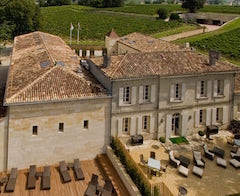
Les vignobles de 7ha du Château Franc-Mayne, Saint Emilion Grand Crus, sont situés au nord-ouest de Saint-Émilion à la fois sur le plateau calcaire et en pied de côte.
Depuis 2005, le château est la propriété de Griet Van Malderen-Laviale et son époux Hervé Laviale, déjà propriétaires du Château de Lussac à Lussac.
L’acquisition a été suivie d’importants travaux avec la création d’un nouveau cuvier et la construction de 5 chambres d’hôtes de qualité.
Les vignes (merlot pour 90% et cabernet franc pour le reste) sont situées sur un sol argilo-calcaire typique de Saint-Émilion. Le chai à barriques, dont la visite est particulièrement impressionnante, est en partie situé dans le sous-sol, bénéficiant d’un très vaste réseau de galeries souterraines résultat de l’exploitation passée du sous-sol pour extraire la "pierre de Bordeaux".
L’antique voie gallo-romaine longe le vignoble. Un vieux relais de poste témoigne du passage des pèlerins vers Saint-Jacques de Compostelle
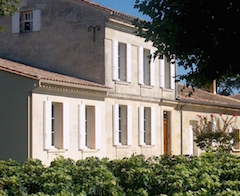
Le Château Laniote, Grand Cru classé compte 5ha au nord-ouest de Saint-Emilion.
La propriété est dans la famille d'Arnaud de la Filolie depuis près de deux siècles. Elle fut constituée par Pierre Lacoste, marchand de vins à Saint-Emilion en 1816, il acheta d'abord un chai avec quelques vignes autour qu'il agrandit petit à petit jusqu'en 1844.
La propriété fut ensuite transmise en ligne directe de mère en fille pendant huit générations. Le nom du propriétaire changea donc à chaque succession : Lacoste, Rouja, Freymond, Schneider, La Filolie.
Au cœur de la ville de Saint-Emilion, appartiennent toujours aux descendants de la famille: la chapelle du XIIIème siècle que l'on peut voir sur l'étiquette, l'Ermitage où vécut le saint : Emilion, ainsi qu'une partie des Catacombes. Ces vestiges sont inscrits aux Monuments Historiques.
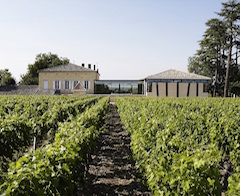
Le château Villemaurine, Saint-émilion Grand Cru Classé de 12ha, à quelques pas du village de Saint-Émilion, vit une véritable renaissance.
Comme on restaure une oeuvre d’art avec soin et respect, la famille Onclin, pour révéler l’excellence et la typicité du terroir et ouvrir le domaine aux visiteurs, a entrepris d’importants travaux : nouveau chai, nouveau cuvier, restauration et habilitation des carrières souterraines du château.
Le vignoble qui se situe sur le plateau argilo-calcaire de Saint Émilion, est actuellement planté à 80 % de Merlot et 20 % de Cabernet franc.
La philosophie de Justin Onclin associe respect du terroir et quête de l’excellence.
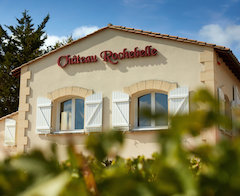
Le Château Rochebelle se trouve au milieu du plateau de Saint-Émilion et des grands noms de l'appellation. Il est la propriété de la famille Faniest depuis le milieu du 19ème siècle. Son nom fait référence aux belles roches que l'on extrayait de ses carrières au 18ème siècle.
Aujourd'hui, Philippe Faniest et sa fille Emilie, œnologue de formation, prolongent le travail des générations précédentes avec une priorité qui peut se voir comme une philosophie : respecter le pied de vigne et son environnement.
Ce petit domaine de 3 ha est situé au-dessus du Château Pavie, face à la cité de Saint-Émilion. Petit train, caves monolithes, jeux de lumière : le concept d'oenotourisme est ici bien rodé. Ses vins, réguliers en qualité, lui ont valu d'être promu en 2012 au rang de cru classé.
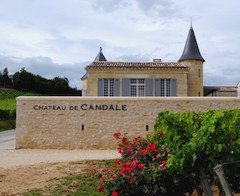
Situé sur la commune de Saint-Laurent-des-Combe, le Château de Candale est classé en Saint-Émilion Grand Cru.
Depuis 2010, le domaine est la propriété de Jean-Louis Vicard qui s'est assuré les services des équipes de Stéphane Derenoncourt pour écrire une nouvelle page de la légende de ce château. En 2017 le Château de Candale, grand cru de treize hectares, ainsi que de l’Atelier de Candale, restaurant bistronomique attenant ont été acquis par la famille Decoster.
Les nombreuses micro-parcelles du vignoble offrent une grande diversité de terroirs et d'expositions, contribuant ainsi à l'élégance et la complexité des vins du château.
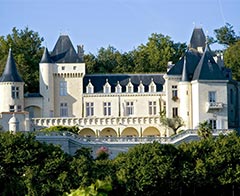
Incontestablement l'un des plus beaux châteaux de la région de Saint-Emilion.
Le Château de la Rivière a été construit au 16ème siècle par Gaston de l'Isle (Maire de Bordeaux) sur les restes d'une tour érigée par Charlemagne en 769. Il a été complètement restauré par Violet le Duc au 19ème siècle, célèbre architecte français.
Au 17ème siècle, 8 hectares de caves souterraines ont été creusés sous le château et sous le vignoble, elles servent encore aujourd'hui de chai de vieillissement.
Le Château de la Rivière a complètement était restauré par Viollet le Duc au 19ème siècle, célèbre architecte français connu pour ses restaurations de constructions médiévales (Cathédrale Notre dame de Paris, Château de Roquetaillade et Château des Tours en Gironde, la Cité de Carcassonne, etc)
Au 17ème siècle, 8 hectares de caves souterraines ont été creusés sous le château et sous le vignoble. Ce sont d'anciennes carrières de calcaire qui sont utilisées depuis de nombreuses années pour le vieillissement des vins du Château de la Rivière.
Le château de la Rivière est aujourd'hui la propriété de la famille GREGOIRE depuis 2003.

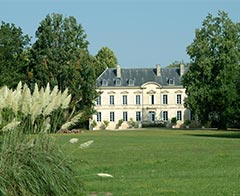
Le Château Siaurac date du XVIIIè et XIXè siècle. Plus grand domaine viticole de l'appellation Lalande de Pomerol, avec ses 46 Ha de vignes plantées, ses vins sont récompensés par médailles d'or et critiques européens. La propriété appartient à la même famille depuis 1832, qui possède également deux autres vignobles réputés sur la rive droite de Bordeaux : Château Le Prieuré, en Grand Cru Classé Saint-Émilion
et Château Vray Croix de Gay à Pomerol. Le parc XIXè de 15ha est rare dans cette région où la vigne est reine
; laissé à l'état sauvage en opposition à la conduite raisonnée du vignoble, il possède de magnifiques arbres centenaires. Vous serez accueillis par Madame la Baronne Guichard qui se fera un plaisir de vous faire découvrir sa propriété ainsi que sa maison, et ses
vins bien sûr !
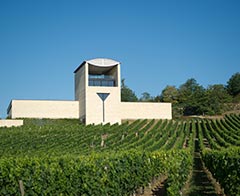
Le propriétaire suisse de ce château a eu l'audace de faire construire par son compatriote, le célèbre architecte Mario Botta, un chai monumental qu'il nomme « cathédrale du vin ». Elle se dresse au milieu des vignes et fait face à la classique chartreuse. A voir !
Situé sur les coteaux de la vallée de la Dordogne, à 6 kilomètres de Saint-Emilion, le domaine de Faugères s'étend sur 80 hectares, 49 dans l'appellation Saint-Emilion et 31 en Côtes de Castillon.
Propriété de la famille Guisez de la première moitié du XIXe siècle à 2005, Château Faugères appartient depuis lors à l'homme d'affaires suisse Silvio Denz, mais c'est Corinne Guisez qui a su, au tournant des années 1990, sortir de l'ombre un domaine tombé quelque peu tombé en déshérence.
Le chai monumental dessiné par Mario Botta et implanté en haut du plateau, face à la Chartreuse 18 ème du Château Faugères s'intègre harmonieusement dans ce paysage classé au Patrimoine Mondial de l'UNESCO.


